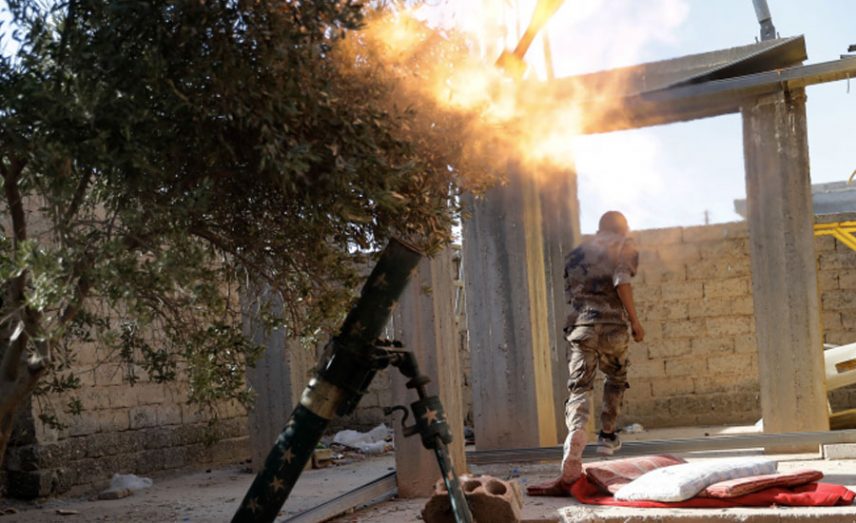With the freezing of most fronts between the Syrian regime and opposition forces as a result of the cease-fire agreements concluded under international sponsorship, and despite the repeated regime violations, fighting in Syria is currently focused on the center and east of the country. It appears that campaigns are mainly being waged against civilians, more so than against the Islamic State (ISIS) organization, which is still resisting the assault by Kurdish militias in Raqqa city while it has been able to carry out counterattacks against regime forces in the southeast of the city and regain some areas.
As regime forces continue their efforts to end ISIS control in areas east of Hama, where they have imposed a siege on the militants' positions, the Syrian Democratic Forces announced it will soon attack areas controlled by the group in Deir-ez-Zor province.
If the developments on the ground do not yet herald the imminent expulsion of ISIS from Raqqa, they do continue to bring unpleasant news to civilian residents whose suffering has increased with the bombardment and lack of food and services, which has moved the United Nations to warn of the continuing plight of civilians.
But civilian suffering is not limited to Raqqa residents, as those living in the areas east of Hama have taken their share of bombardment and air raids as well. A number of people have been killed and dozens wounded, including women and children, during continuous Russian and Syrian air raids on the area, after regime forces recently imposed an asphyxiating siege on Aqairat, east of the city, in which about 15,000 people reside, according to local estimates.
The siege, in which groups under President Bashar al-Assad’s Qalamoun Shield and Saqour al-Sahara (Desert Hawks), as well as other Iranian militias, have participated, coincide with intensified battles between ISIS and regime forces, which has resulted in residents fleeing a number of towns and gathering in specific areas in light of the heavy land and air bombardment.
Meanwhile, the Russian Defense Ministry announced that Syrian regime forces under the command of Suhail al-Hassan advanced toward the city of Deir-ez-Zor to break the siege on the city after pro-Assad forces took control of a wide areas in the eastern Homs countryside, reaching the city of Al-Sukhnah in the Shaer oil field amid a collapse in ISIS ranks.
Regime forces took control of ISIS positions in the northeastern Homs countryside, which led to a siege of the group in an area of 2,000 square kilometers, after advancing from the southern Raqqa countryside and taking control of Jabal al-Dahak, Kherbet al-Talaa and the Abu Qilla Valley, which made it possible for them to meet up with other forces north of the city of Al-Sukhnah east of Homs. The regime, meanwhile, took the town of Jine al-Albawi and the surrounding hills in the eastern Hama countryside. Earlier this month, regime forces had taken the city of Al-Sukhnah in the northeastern Palmyra countryside as part of its campaign aiming to reach the city of Deir-ez-Zor east of the country.
“Promising” truce!
In the country’s south, and despite the repeated regime violations of the truce in Daraa province, the cease-fire seems to be “promising,” at least from the viewpoint of Moscow and Amman, its main sponsors, especially in terms of laying the foundation for reopening the Syria-Jordan crossing and finding a coexistence between the Assad regime and the opposition in the area on the basis of a fait accompli.
In this context, the Russian Hmeimeem base announced that a meeting had been held at the facility between the opposition in Daraa and the regime to discuss the issue of “reconciliation,” saying it was the first of its type since the start of the “crisis” six years ago.
The governor of Daraa on the regime side, Khalid al-Hanous, announced “reconciliation talks in which a large number of influential people among the ranks of the militants who have a good reputation participated.”
Russia has deployed inspection points and observation centers in southern Syria to monitor the regime’s implementation of the cease-fire there.
Meanwhile, local sources in Daraa governorate said that a meeting was held on Saturday evening between the free Daraa governor and some rebel groups around the possibility of reopening the Nasib border crossing. No decisions on the issue have been made yet.
Violations
Days after Al-Rahman Legion and Russia announced they had reached a cease-fire deal in the Eastern Ghouta and the Jobar district east of the capital Damascus, regime forces violated the agreement by trying to storm the city of Ayn Terma backed by tanks and under cover of artillery and rocket fire.
Al-Rahman spokesperson Muwaffaq Abou Ghassan said that “regime forces attempted to storm the Ayn Terma front with three military vehicles and with rocket fire in which they used ‘elephant’ rockets in addition to ‘hell cannon’ shells.” He added that the Al-Rahman fighters responded to the assault, adding that “with this attack, the regime wanted to learn the preparedness of the fighters deployed on the front.”
Activists added that a number of cases of asphyxiation had occurred as the regime forces targeted the Ayn Terma front with poison gas that resembled chlorine, while regime forces targeted the city of Zamalka in the Eastern Ghouta with three heavy artillery shells.
This article was translated and edited by The Syrian Observer. Responsibility for the information and views set out in this article lies entirely with the author.


